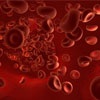
With estimates suggesting five-million South Africans are living with HIV/Aids, those professionals working in high exposure environments need to ensure they are aware of the transmission methods of the disease and take appropriate preventative measures.
Dr Dominique Stott, Medical Standards and Services Executive at PPS, says that while the rate of HIV transmission from needlestick injuries remains marginal - 0.3% for skin exposure and 0.09% for mucous membrane exposure – when compared with other types of transmission; for those who are more exposed to this kind of injury, such as medical professionals, it is vital to understand the risks involved and to take adequate precautions to mitigate against them.
“All medical professionals who are exposed to body fluids carrying the virus as a normal part of their work must remind themselves and their colleagues of the appropriate safety practices. This is particularly important for those who may be involved in emergency situations, such as a motor vehicle accident, where a health professional is required to act immediately, without adequate protection, thereby increasing the risk of exposure.”
She says it must be remembered, however, that HIV is not contracted by normal skin contact such as shaking hands. “Increased risk is present in deep or penetrating injuries such as scalpel cuts during surgery, a high viral load in the patient i.e. the patient is highly infective, visible blood on the device or injury with a needle contaminated with blood from a blood vessel as opposed to that which has been in muscle.”
Disability
Dr Stott says that while HIV can now be managed as a chronic disease, side-effects can make work problematic, or in some cases even impossible, to perform.
“Temporary disability may result in the initial stages where the control of opportunistic infections is being optimised and there may be periods where long term work absence is required to recuperate from an illness such as tuberculosis.
“Permanent disability may also arise from nerve problems in the hands and feet; wasting disease due to the diarrhoea; as well as various forms of cancer. There are also side effects to the medication used to manage HIV, which can cause disability ranging from minor nausea and abdominal pain which is temporary, to severe life threatening which require hospitalisation.”
Dr Stott advises that normal precautions for professionals include wearing gloves and using safety needle devices when taking blood or coming in contact with body fluids. “Using goggles to prevent blood splashes will also help prevent contact with eyes and hand washing after direct contact with patients and covering all cuts and abrasions with a waterproof dressing will diminish the chances.
“Safe collection and disposal of needles and other sharp objects is essential to prevent accidental exposure, not only by the health care professional but also by those having to dispose of medical materials such as medical waste disposal workers. These disposal facilities should be standard in any healthcare facility,” concludes Dr Stott.
(Epic communications, November 2011)




 Publications
Publications
 Partners
Partners










